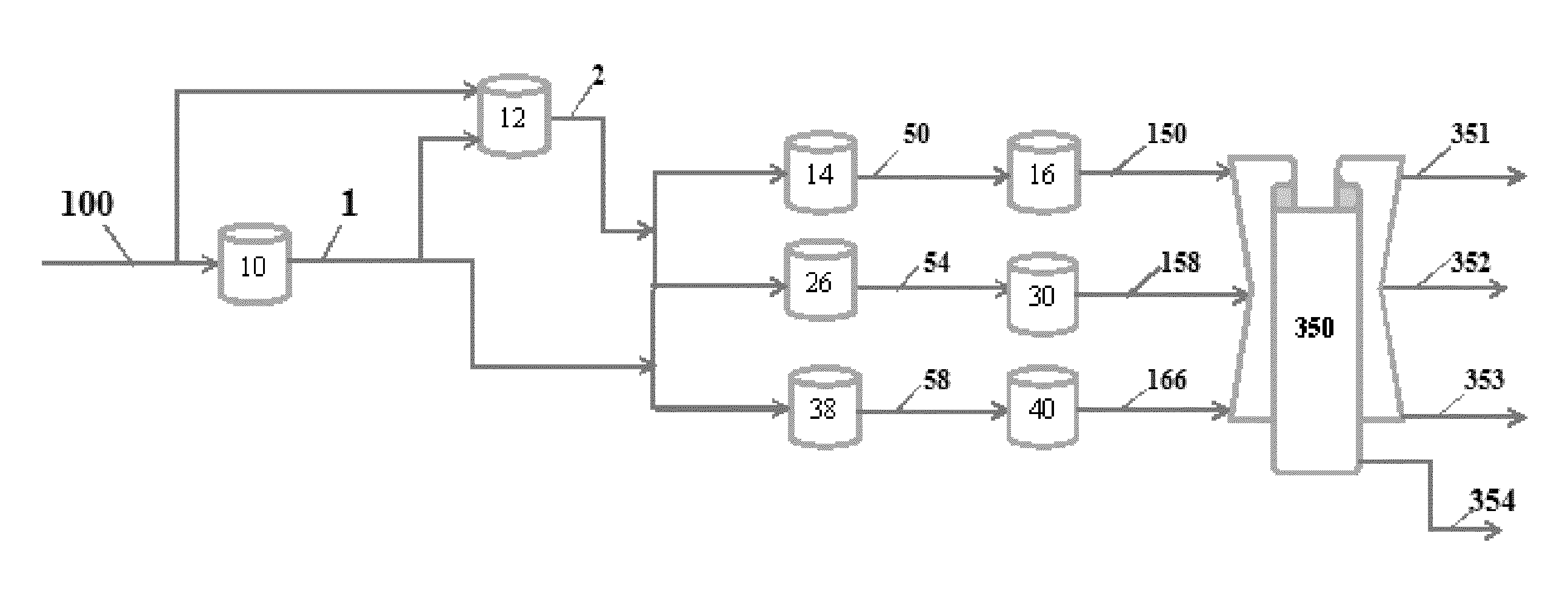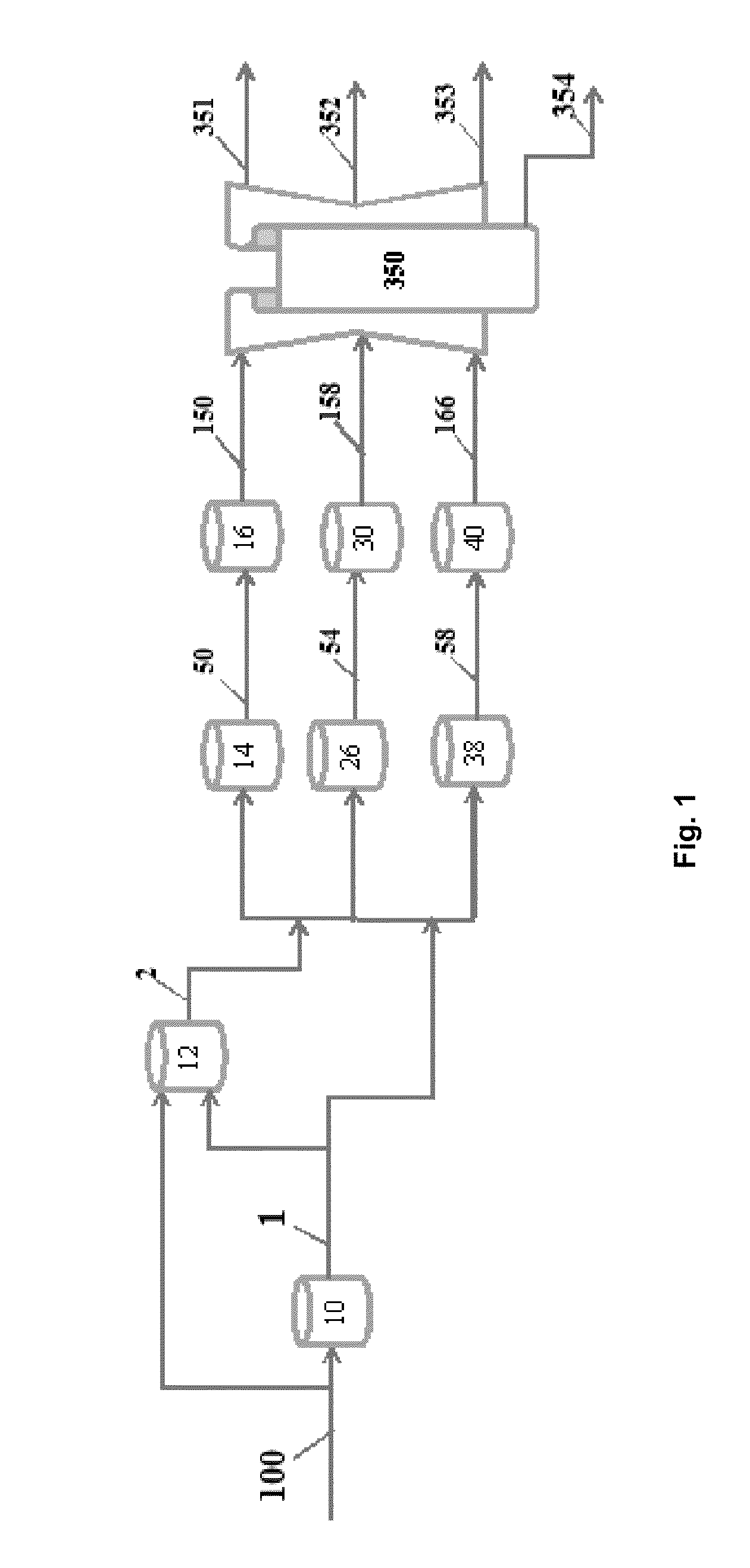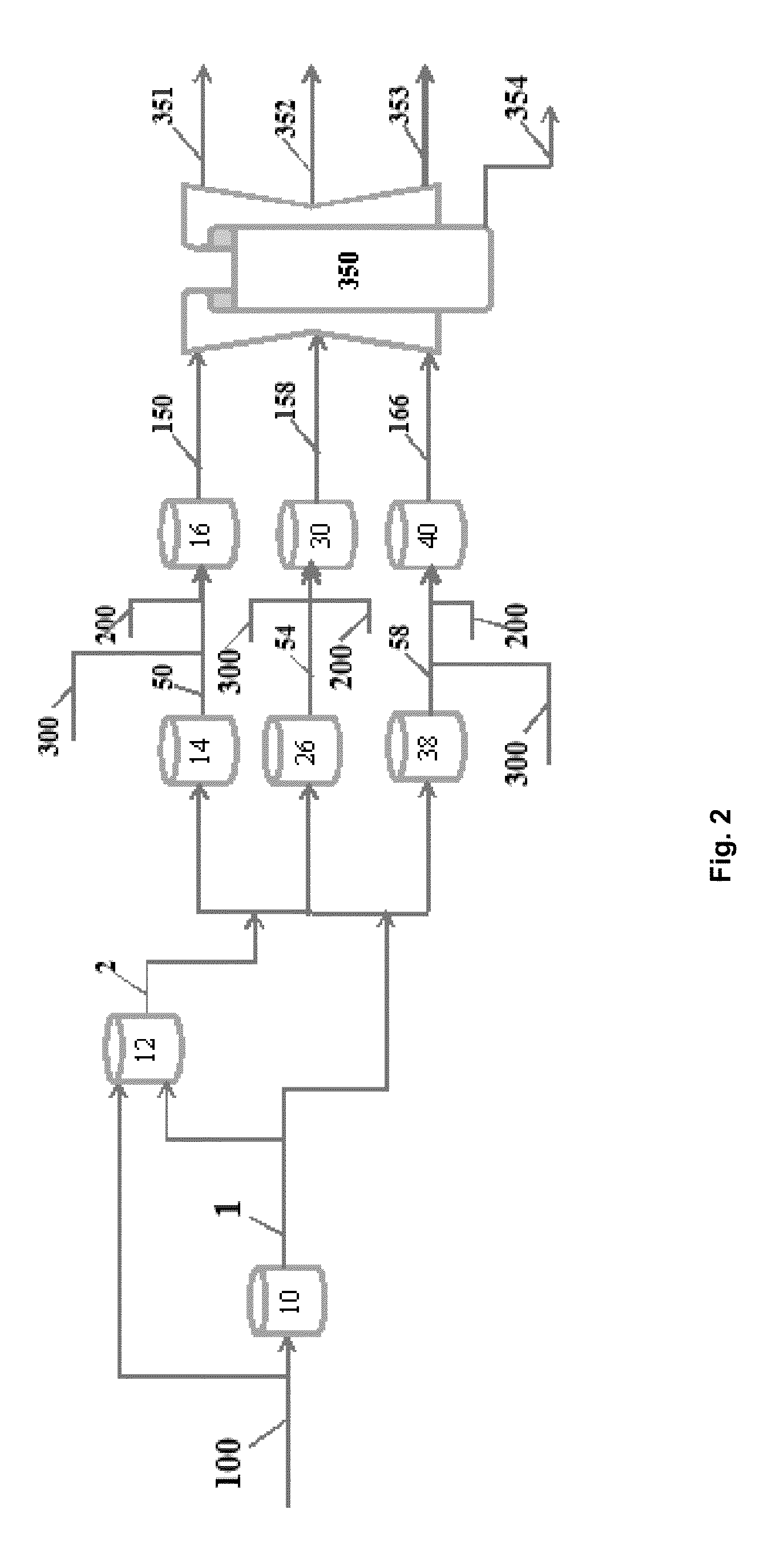Composition and methods for improved fuel production
a technology of fuel production and composition, applied in the direction of fuels, fatty acid chemical modifications, fatty acid oxidation, etc., can solve the problems of reducing catalyst coking and prolonging catalyst life, so as to promote wgs reaction, reduce hydrogen utilization, and save volume and cost of hydrogen utilization
- Summary
- Abstract
- Description
- Claims
- Application Information
AI Technical Summary
Benefits of technology
Problems solved by technology
Method used
Image
Examples
example 1
[0059]A raw bio-oil with approximately 30% water content was oxidized with a strong oxidizing agent. As shown in Table 1 the acid number increased from 90.28 to 161.0 mg KOH / g. Viscosity decreased by 45.16%; water content increased by about 11%. The HHV of the oxidized product decreased from 16.01 to 15.40 MJ / kg probably due to the water content increase. Density decreased from 1.22 to 1.14 g / ml and pH was reduced to 2.87 from 3.16. Oxygen content increased somewhat from 53.58 to 58.96. This resulted from both increased acid and water content.
[0060]The oxidized product was then partially deoxygenated in the presence of pressurized syngas (800 psi) and a Ni-based heterogeneous catalyst with an additive. Reaction temperature was 360° C. and time of reaction was 90 min. After cooling the partially deoxygenated oxidized product had an aqueous phase at the bottom of the vessel and an oil phase at the top. The aqueous fraction was separated the oil fraction. A portion of the oil fraction ...
example 2
[0073]In an example of the application of this liquefaction process, a liquefaction treatment using 5-10 wt % (dry weight biomass basis) of KOH as catalyst has been performed. The aqueous alcohol solvent is comprised of 1:1 water and alcohol. The ratio of solvent to dry weight DDGS was 2:1. Accordingly, a 300 g quantity of material plus aqueous alcohol solvent to be liquefied would contain 100 g DDGS, 100 g water and 100 g of alcohol. The mixed ingredients were added to an autoclave and thermally treated for 30 min without pressure or gas addition. After attaining a reaction temperature in the range of 350-400° C. the reaction was completed and the liquefied product removed. No pressure was utilized to assist in the reaction but pressure may be applied as some practitioners have done.
[0074]In an example of the application of this catalytic deoxygenation process, liquid products produced with the liquefaction process and 5 wt % of a heterogeneous catalyst were subjected to a full deo...
PUM
| Property | Measurement | Unit |
|---|---|---|
| temperature | aaaaa | aaaaa |
| temperature | aaaaa | aaaaa |
| pressure | aaaaa | aaaaa |
Abstract
Description
Claims
Application Information
 Login to View More
Login to View More - Generate Ideas
- Intellectual Property
- Life Sciences
- Materials
- Tech Scout
- Unparalleled Data Quality
- Higher Quality Content
- 60% Fewer Hallucinations
Browse by: Latest US Patents, China's latest patents, Technical Efficacy Thesaurus, Application Domain, Technology Topic, Popular Technical Reports.
© 2025 PatSnap. All rights reserved.Legal|Privacy policy|Modern Slavery Act Transparency Statement|Sitemap|About US| Contact US: help@patsnap.com



